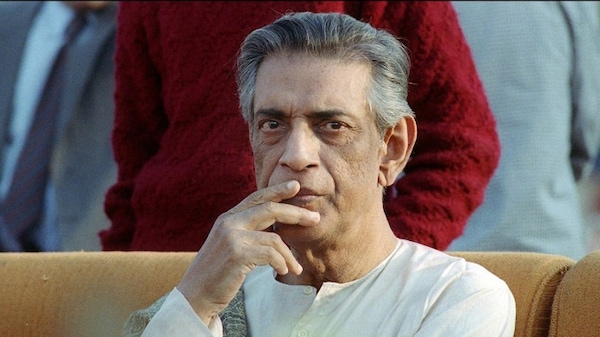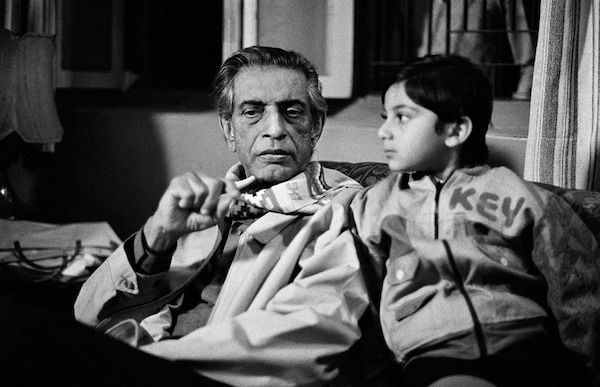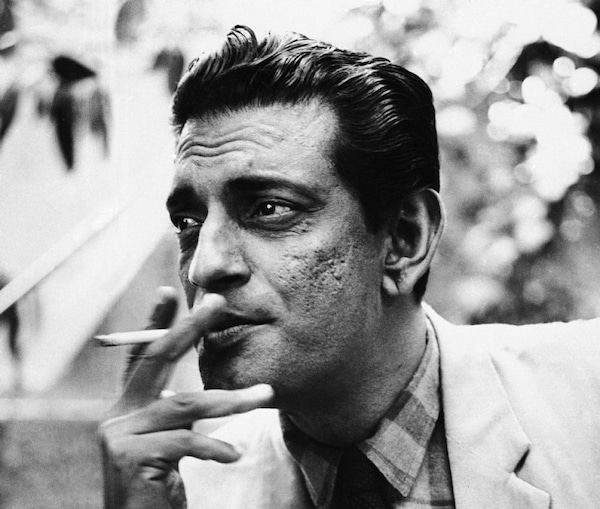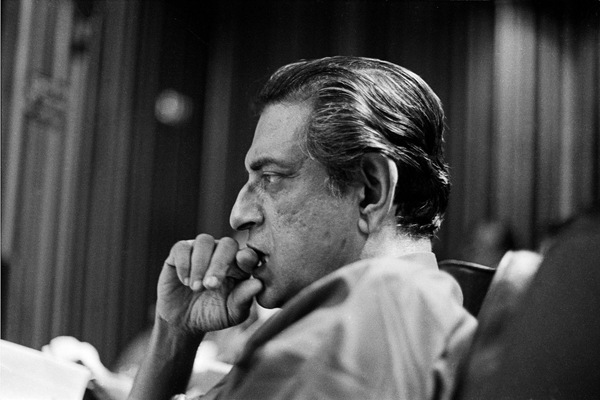12 facts about Satyajit Ray that you possibly didn’t know
The auteur designed the logo for Rupa Publications, inspired director Wes Anderson and played guide to filmmakers Akira Kurosava and Michelangelo Antonioni during their visit to India.

Last Updated: 04.17 PM, Jun 25, 2021
One of the greatest filmmakers, writers, illustrators, and music composers of the 20th century, Satyajit Ray's legacy lives on through his cinema, to this day. The man who engineered the new wave in Indian cinema was also responsible for revolutionizing Bengali narratives through his distinct voice and style. There's a lot that is known about him, from his internationally-acclaimed filmography to his early life and career. However, here are some lesser-known facts about the legend that will surprise you:

1. Satyajit Ray designed quite a few memorable book covers for Signet Press, such as Jim Corbett’s classic Man-Eaters of Kumaon and Jawaharlal Nehru's Discovery of India. But only a few may be aware of the fact that the auteur also designed the logo for Rupa Publications and he asked for some books as his fee for the job.
2. In 1962, Charlie Chaplin became the first person from the film fraternity to be awarded an honorary doctorate by Oxford University and in 1978. Ray became the second person to be awarded the same.
3. Ray has also contributed to the world of fonts where he combined Indian motifs and western calligraphy to create four Roman fonts, 'Daphnis', 'Holiday Script' and two bearing his name 'Ray Roman' and 'Ray Bizarre'.

4. Ray made his directorial debut with Pather Panchali for which he launched a publicity campaign thereby becoming the first person in Bengal to use a teaser advertising campaign before it hit the theatres. He designed the posters himself, a habit he maintained throughout his career.
5. In 1961, he revived and published the Bengali children’s magazine Sandesh, which was founded by his grandfather Upendrakishore Ray Chowdhury. In 1987, Ray made a documentary about his father Sukumar Ray for the West Bengal government to celebrate the centenary year of the senior Ray featuring his life and works in the form of paintings, photographs, and readings.
6. Ray was responsible for launching two stars in the film industry in the final instalment of his Apu trilogy, Apur Sansar. One was Soumitra Chatterjee (playing the adult Apu) who subsequently went on to collaborate with Ray in several films. Apu’s bride Aparna was played by the then 14-year-old Sharmila Tagore who would eventually become one of the most sought-after leading actresses.

7. Satyajit Ray believed that Steven Spielberg had borrowed the basic idea for his film E.T. The Extra-Terrestrial from Ray's unrealized sci-fi film The Alien, the script for which had been circulating across Hollywood studios for years. Renowned science fiction author Arthur Clark even called Ray asking him to file a copyright case and not allow this release to slide. It is said that Peter Sellers, Marlon Brando and Steve McQueen had shown keen interest in the film that Ray had planned to make but the project never materialised.
8. In 1977, Satyajit Ray spent a day with Michelangelo Antonioni (the only director to have won the Palme d'Or, the Golden Lion, the Golden Bear, and the Golden Leopard) and Akira Kurosawa (one of the greatest and most influential filmmakers in the history of cinema) during their visit to India. He showed them around the Taj Mahal following which Kurosawa wrote of Ray - “I have always felt from the first time I met you that you are the kind of man who is like a huge tree. A great tree in the woods in India.”
9. Satyajit Ray was a big fan of Herge's Tintin and makes many visual and verbal references to the Belgian reporter, particularly in the Bengali sleuth Feluda stories and in the Feluda film Jai Baba Felunath, the final piece of the puzzle is suggested by the cover of The Broken Ear. His loyal sidekick, Topshe who is also the narrator, is a shout out to another of Ray’s favourite characters Watson from the Sherlock Holmes series.

10. Ray believed that music was intrinsic to the sensibility of a film and would start work on the music right from the scripting stage of the film, ensuring that the story and the corresponding musical score evolved simultaneously. One of his unique characteristics was that he could note down the music either in Indian or western notation, depending on his board’s musicians.
11. Ray scored the soundtrack for many documentaries and feature films, including James Ivory’s Shakespeare Wallah in 1965. In his last film that he directed Agantuk in 1991, he sang a few lines in his characteristic baritone voice. Celebrated French composer Maurice Jarre once referred to Ray’s musical repertoire as “haunting and soul-stirring at the same time”.
12. American filmmaker Wes Anderson, known for his eccentric and distinctive visual and narrative styles, said that it was Satyajit Ray’s movies that made him want to come to India. In his 2007 film The Darjeeling Limited starring Owen Wilson, Adrien Brody and Jason Schwartzman, he features several of Ray’s original compositions. The iconic Charu’s Theme from 1964’s Charulata features repeatedly throughout the movie.
